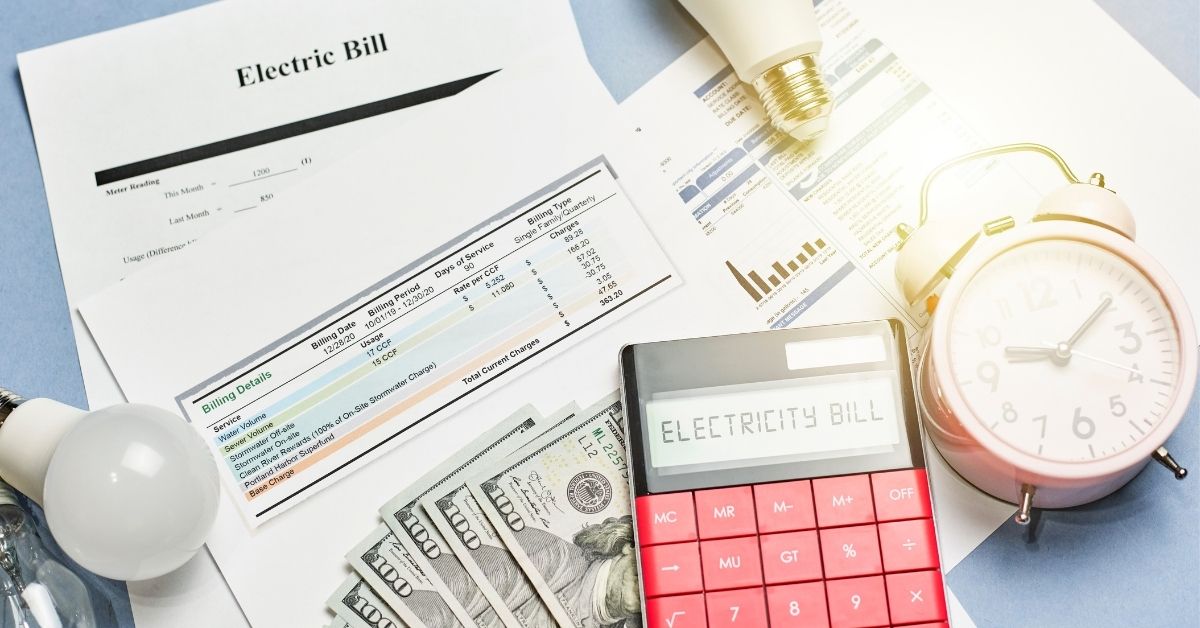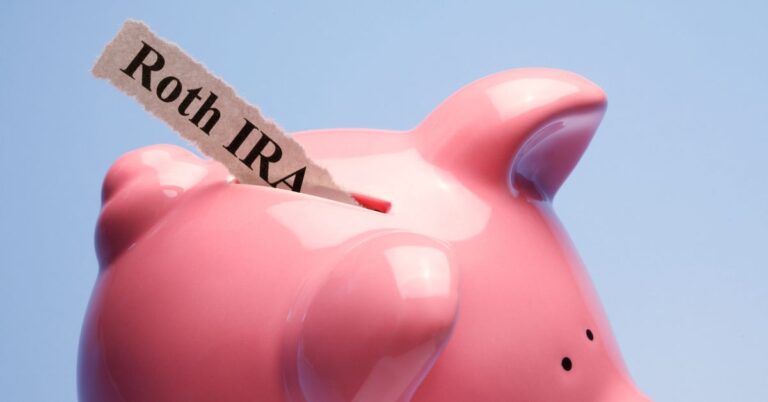31 Ways to Lower Utility Bills
Taking steps to lower utility costs provides numerous benefits. For most teachers, utility bills and related household expenses make up a large portion of our monthly expenses. The following ideas will help you get started lowering your monthly utility bills. Small savings add up over time, and you can put the money you save toward paying down debt, building up your savings, or for meeting other financial goals.

Table of Contents
Fast and Easy Ways to Lower Your Energy Bill
Here are some fast and easy ways to save money on your energy bill:
1. Turn up the temperature in summer. Turn down the temperature in winter.
In most cases, you won’t even notice a change if you keep your home a bit warmer in the summer or cooler in the winter. Try adjusting the temperature just one or two degrees at a time until you find your optimal comfort level.
During the summer months, setting your thermostat at 85 to 90 degrees while you are away will provide additional savings because you won’t be paying as much to cool an empty house. Similarly, if you are away during the winter months, you can lower the temperature to around 50 degrees to keep pipes and appliances from freezing.
When you will be away for an extended period, 7 to 10 degrees is the general guideline for how much you should raise or lower the temperature to avoid spending so much money on heating and cooling when no one is at home.
2. Change your HVAC system’s air filters regularly
If you cannot remember the last time you changed your home HVAC system’s air filters, they probably need changing! After replacing dirty filters with new ones, check your filters every month to see if they need changing. Although your home’s air filters will not necessarily need to be changed every month, they should be changed every three months, at the minimum.
Dirty filters slow down the air flow, wasting energy by requiring your HVAC system to work harder to heat or cool your house. Similarly, clean filters will prevent dust and dirt buildup in your HVAC system, which can cause maintenance problems that will require expensive service calls. Additionally, clean air filters reduce the amount of allergens circulating in your home, resulting in a cleaner and healthier living environment.
3. Insure air flows freely from vents throughout your living space
Also, clean the vents on registers, radiators, and baseboard heaters and make sure these vents are not blocked by furniture, drapery, or other objects. You don’t want to waste money heating or cooling the bottom of a chair or your curtains, for example.
4. Use exhaust fans sparingly during cooler months
Along with removing cooking heat, smells, and moisture, kitchen and bathroom exhaust fans also take out warm air. Although you still need to use exhaust fans from time to time–especially if you are cooking with natural gas or propane–make sure you are only running your exhaust fans when necessary.
5. Close the fireplace damper when possible
Because warm air rises, keeping the fireplace damper closed during cooler weather is an easy way to prevent heat from escaping up the chimney.
If you have a gas fireplace, the position of the damper while the fireplace is in use will depend on the type of logs that you have. Ventless, or vent free, gas logs burn gas cleanly and produce virtually no exhaust, so they can be burned with the damper closed.
6. Understand that a lot of the heat generated by wood burning and vented gas fireplaces goes up the chimney
Vented and fully vented gas logs must be burned in a fireplace suitable for burning real wood, and the damper must be left open while the logs are in use. Vented gas logs do not burn gas cleanly and create exhaust similar to that produced by a natural wood-burning fireplace. For this reason, the damper must be open to allow exhaust and carbon monoxide fumes to escape.
Be aware that a lot of the the heat generated by vented gas fireplaces as well as by wood burning gas fireplaces goes up the chimney rather than warming the room. For this reason, you might consider adding an insert with glass doors to your fireplace.
7. Change the direction of your ceiling fans according to the season
Ceiling fans have a switch that allows you to control the direction in which the fan turns. In warm weather, the fan should turn counterclockwise to create a downdraft of cooling air in the room. Hot air rises, so during cooler weather, changing the fan’s direction to clockwise will create an updraft and circulate warm air around the room. Keep the fan speed’s on the lowest setting to avoid creating a cool and drafty air flow.
The photo below shows the switch on the ceiling fan that allows you to change the direction in which the fan turns.

8. Turn off unnecessary lights
Make it a habit to turn off the lights when you leave a room. Along with saving money on your light bill, turning off lights when they are not needed will help you extend the life of your light bulbs. If you like to leave lights on for security, consider getting an inexpensive timer that will allow you to turn them on only when it is dark outside.
9. Purchase energy efficient lightbulbs
Compared to traditional incandescent lightbulbs, LED and compact fluorescent bulbs use from 25% to 80% less energy and can last anywhere from 3 to 25 times longer. Although these more energy efficient varieties of bulbs cost more to buy, you will recoup your purchase price in energy savings and the increased longevity of these bulbs.
10. Use blinds and shades to help with heating and cooling
Blinds and shades provide another layer of insulation for your home. When outside temperatures are warm, blocking sunlight will help you avoid heat gain that will result in your HVAC unit having to do extra work to bring the temperature back down.
When outside temperatures are cooler, you might want to open the blinds to allow sunshine to warm your home naturally. However, remember to close the blinds when temperatures fall at night because heat will be lost through uncovered windows.
11. Use adhesive window film to help control the temperature
Many times our windows let in too much heat from the summer sun or allow chilling winter winds to creep right into our living spaces. If you have spaces in your home that are affected by seasonal temperature fluctuations, window film might provide a solution.
Widely available at home centers and other retailers, window film can provide an additional layer of insulation for your home for a minimal cost.
12. Harness the power of natural ventilation
Although we take central air conditioning for granted in today’s world, it wasn’t commonly used in new residential construction until the 1950s. The high ceilings and attractive windows people admire in older homes were used to help cool the house, with the high ceilings allowing heat to rise well above the heads of the residents and the windows providing ventilation.
Some of these same methods used to cool older homes can help us cool our 21st century living spaces. By opening windows during cooler times, you can harness the power of nature to help bring down your home’s temperature without running the air conditioner. Just remember to remain aware of the outside temperature and close the windows when temperatures increase to avoid bringing hot air into your home.
13. Consider how, where, and when you cook
Outdoor kitchens and patio cooking areas are fashionable in today’s world, but years ago people cooked outdoors to avoid heating up their homes during the hot summer months. Cooking generates a lot of heat, so when outside temperatures rise, planning your cooking to avoid heating up your kitchen during the hottest part of the day will help you save on cooling costs. Using an outdoor grill whenever possible will help matters as well.
Similarly, when outside temperatures are cooler, cooking heat will help warm up your home. After you finish with your cooking and have turned off the oven, leaving the oven door open for a while will allow the oven’s heat to help warm the room.
14. Unplug electronics when not in use
Even when they are not being used and switched to “off,” all devices connected to an electrical power source consume energy. This energy consumption is known by a lot of different names, including “standby loss” or “leaking electricity.” Devices that have a clock, a standby light, or that store any kind of information are the biggest energy wasters, even when they are turned off.
Obviously you will want to leave devices plugged in if you use them frequently, but consider unplugging those that you do not use regularly.
Another benefit of unplugging devices when they are not in use is that they will be protected from the damage caused by power surges.
15. Style your home for savings
Everyone loves a stylish and inviting living space, and giving some thought to home accessories can help us manage our energy costs.
During warmer months, cooling mattress toppers, linen or lightweight sheets, and insulated curtains can help keep costs down. When cool weather arrives, switching to flannel sheets and adding attractive warm blankets and decorative throws will make staying warm even easier. Natural fibers such as cotton and wool will keep you cool in the summer and warm in the winter.
Adding area rugs can make solid surface floors like hardwood, vinyl, or tile a bit warmer. Just remember to place non-slip padding under rugs to insure that they don’t pose a safety hazard.
Fast and Easy Ways to Lower Your Water Bill
Along with electricity and gas, water is one of the more expensive utility bills. Additionally, water shortages in some areas make conserving water a civic responsibility as well as a money saver.
16. Repair leaky faucets and running toilets
Little things add up quickly, especially when it comes to waste. For example, a leaky faucet or shower head dripping 60 drips per minute will waste 5 gallons of water every day–that’s over 2,000 gallons a year!
If you have your receipt for a faucet that is leaking, many companies will ship replacement parts to you free of charge. I have repaired my American Standard kitchen faucet several times using the free parts the company has sent me.
17. Take shorter showers
Showers typically use from 2 to 2 1/2 gallons of water every minute, so shortening your showering time by as little as a few minutes will add up to big savings over time. Additionally, you will save money on your energy costs because you won’t be using as much hot water.
18. Lower the temperature on your hot water heater
For most hot water heaters, the standard temperature is 140 degrees. However, the 110 to 115 degree range is the water temperature most people find comfortable for bathing or showering. The 110 to 115 degree range is also sufficient for removing dirt and other toxins. For this reason, 140 degrees is unnecessarily high.
Reduce your water heater’s temperature a little bit along until you find the optimal temperature. You will save money not just on the cost of heating the water, but you will save on your total water consumption by using less cold water to bring the hot water to a comfortable temperature.
Similarly, if you will be away for a few days, you can reduce the temperature of your hot water heater even more drastically. (You may want to leave yourself a reminder to turn the water heater’s temperature back up when you return so that the water will be hot when you need it!)
19. Wash clothes in cold water when possible
There are times when we want to wash clothes in warm hot water, such as when we want to kill germs and sanitize. Also, when very cold winter temperatures make our cold water especially cold, some detergents may not work as well.
However, in many cases washing clothes in cold water will work just fine. Most fabrics will last longer if washed in cold water, and cold water washing reduces shrinking and fading. Cold water is sufficient for removing most types of stains, and some stains such as blood and perspiration will set in warmer water.
20. Comparison shop for rates on electricity
Consumers who live in deregulated markets–states where market competition for retail energy supply is allowed–have the option of negotiating the rates they pay for their electricity.
Unfortunately, because most markets in the United States are regulated, not everyone has the option to negotiate their electrical rates. The website of the Environmental Protection Agency (EPA) provides more information on deregulation as well as a map showing the states in which markets are deregulated.
Home Upgrades and Renovations that will Save You Money on Utilities
21. Get an energy audit
If you need help getting started with improving your home’s energy efficiency, an energy audit provides a good starting point. As with any type of audit, an energy auditor will perform a close inspection of your home’s energy usage that will alert you to problem areas. Energy auditors may use infrared scanning to detect air leakage and other thermal defects that might be causing energy loss and costing you money.
You can use the results of an energy audit to focus your energy improvements. You can find a certified energy auditor near you by consulting the directory of the Residential Energy Services Network.
22. Add insulation to your home
Adding insulation is one of the most cost effective upgrades you can do in your home. This can be a DIY project, or you can hire someone to add it for you. Various types of insulation are readily available and relatively inexpensive. Bulk insulation such as rolls and blow-in fibers, weather stripping, spray foam, and caulk are all products you can use to add additional insulation that will enable you to save money on your heating and cooling costs.
Consulting the climate zone map on the U.S. Department of Energy’s website will show you how much insulation your home needs.
23. Install a programmable thermostat
A programmable thermostat allows you to save money on heating and cooling costs by adjusting the temperature in your house when you are away and do not need for it to be as cool or warm. These temperature adjustments are easy to make with a programmable thermostat, also known as an automatic setback.
With a programmable thermostat, you can enter and store up to six or more different daily temperature settings that you can manually override whenever you need to. The work that your home’s heating or air conditioning unit does will then adjust according to the temperatures you have entered in the thermostat.
The fact that most utility companies use time-variant electricity pricing, a practice by which they change higher rates at peak times of the day of the month, is another reason a programmable thermostat will help you curb energy costs. You don’t want to be charged your utility company’s highest rate for keeping your home too cool or too warm during a time when the house is empty.
Although we usually think about the benefits programmable thermostats provide in terms of energy savings costs, they can also increase our comfort level when we are at home. For example, during the cold winter months, you could program the thermostat to increase your home’s lower nighttime sleeping temperature a short time before you have to be awake and out of bed, making that early morning alarm clock a little bit less unpleasant!
Be aware, however, that the U.S. Department of Energy does not recommend programmable thermostats for use with heat pumps. This is because maintaining a moderate setting is the most energy efficient to use with heat pumps. The U.S. Department of Energy’s website offers additional tips and information about programmable thermostats.
24. Insulate your water heater
If you have an older water heater, insulating it provides a way to prevent energy loss and save money. If your water heater is relatively new, it probably already has the recommended insulation in it to prevent energy loss. Look at the label on your tank to see if it has an R-value of at least 24.
However, if your water heater feels warm when you touch it, it would benefit from some additional insulation. Prices for a water heater insulation blanket range from $20 to around $50, depending on the gallon size of the tank you need to cover. Adding this additional insulation can save you from 7% to 16% on your annual water heating energy costs. This U.S. Department of Energy video shows how to insulate your water heater.
25. Install water efficient faucets, showerheads, and toilets
The average household spends about $1,000 every year on water, but that amount can be reduced by replacing older plumbing fixtures with newer versions that meet the Environmental Protection Agency’s (EPA) guidelines for water efficiency and carry the WaterSense label.
WaterSense products are tested to insure that they provide the same quality and performance as products that use more water, so you will not have to sacrifice quality to improve your efficiency. The EPA provides a WaterSense search tool that makes it easy for you to research various products and find those that meet the guidelines for water conservation and efficiency.
26. Replace or upgrade old windows
Older, single-pane windows allow a lot of heat and air to escape, driving up your energy consumption and your bill. Consider replacing your older windows with newer more energy efficient types, such as thermal, double-pane, or “low-E” (low emissivity, glass designed to minimize the amount of infrared and ultraviolet light that comes in) varieties. These newer types provide more insulation, resulting in lower energy costs.
If replacing older windows is cost-prohibitive, or if you want to keep your home’s original windows for aesthetic reasons, you can take steps to make your existing windows more energy efficient. Installing storm windows and replacing deteriorating caulk with new caulk will help improve energy efficiency.
27. Use energy-efficient doors
As with your home’s windows, doors should provide a barrier against the heat and cold of the outdoors. Although doors with decorative glass panels are attractive, the glass is a poor insulator and allows a great deal of heat and cool to escape.
When you replace older doors, look at the new door’s R-value. If you choose to install a door with glass panels, make sure the frame and glass follow guidelines for energy efficiency.
28. Upgrade old appliances to more energy-efficient models
Household appliances are the third highest consumer of energy in the home. (The HVAC system consumes the most energy, and the water heater comes in at second place.) For this reason, when it comes time to repair or replace an older appliance, consider the energy cost savings a newer, more energy efficient model can provide.
Appliances labeled with the U.S. government’s ENERGY STAR symbol provide increased energy efficiency. As time passes and manufacturers continue to improve product efficiency, ENERGY STAR ratings are revised and updated to reflect those improvements. The ENERGY STAR website provides additional information and allows you to search for specific products that have the ENERGY STAR label.
29. Service your HVAC system
Having a professional heating and cooling technician service and inspect your home’s HVAC system every year or two is a relatively small expense that can save you money in the long run.
A certified technician can check for potential problems, clean the burners and exhaust vents, and perform other routine maintenance–all steps that could help you to avoid an expensive repair or breakdown of your equipment during the coldest days of winter or the hottest summer months.
30. Upgrade your HVAC system
Most of us dread the day when our decades-old HVAC unit goes out, knowing that replacing heating and cooling units is one of the most expensive home repairs. Despite the initial cost, the savings and increased comfort level a new system provides can make the costly upgrade or replacement worthwhile.
If your home’s existing HVAC unit is more than 10 years old, replacing it with a new ENERGY STAR certified model will help you reduce your energy costs and improve your home environment. Newer, more energy efficient units can save you up to 20% on your annual energy costs. The ENERGY STAR website provides additional information about energy-efficient heating and cooling systems.
31. Use smart home devices to monitor your home’s energy consumption
Technology continues to evolve, with new devices entering the marketplace regularly. Many types of smart home devices exist that can help you save money on energy costs, including smart power strips, smart thermostats, smart blinds and lighting, and smart appliances.
The Smart Energy Consumer Collaborative offers specific suggestions and links to devices that can save you money by taking your home into the 21st century.
Home Upgrades and Renovations Can Earn Tax Credits
Depending on the type of upgrade you choose, you may qualify for a Federal Income Tax Credit. These non-business energy tax credits range from 10% of the cost of the upgrade (excluding installation costs) up to $500 or a specific amount from $50 to $300.
Qualified improvements include things like adding insulation and installing energy efficient roofs, windows, and doors. Also, replacing existing HVAC systems and water heaters with qualifying products can earn tax credits as well. Specific information about qualifying products and the amounts of the the tax credits can be found on the ENERGY STAR website.
Join the SaveYourBestLife teacher community to insure you don’t miss any new content!
All links on this site are checked regularly. However, because the Web changes constantly, sometimes links can go down without my noticing. If you encounter a broken link, please leave a note in the comments or email me at Lou@saveyourbestlife.com







